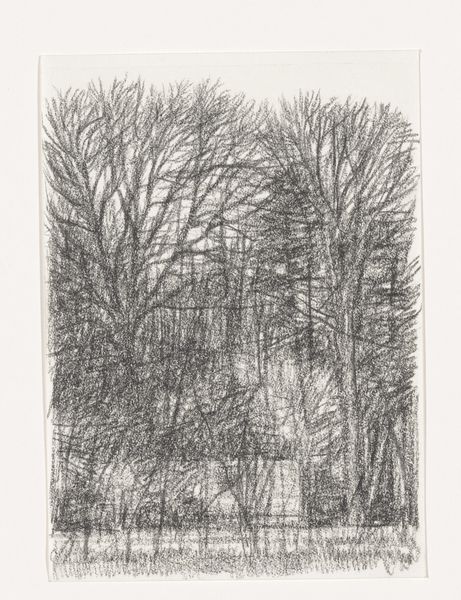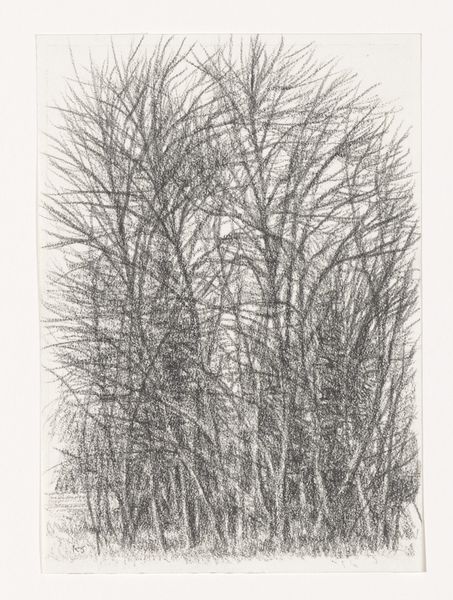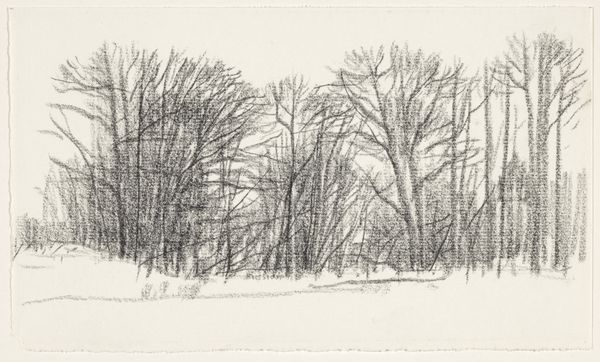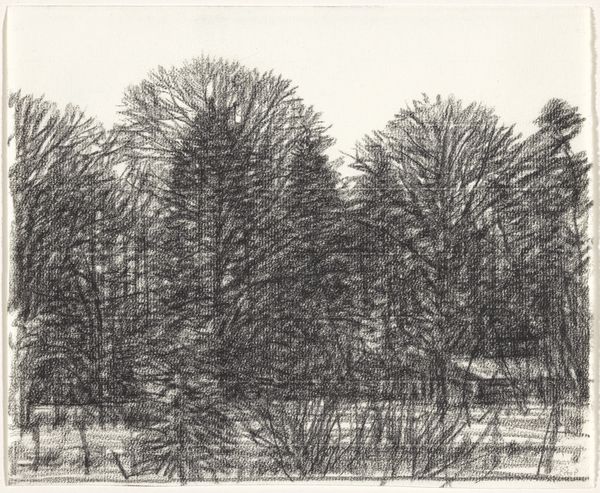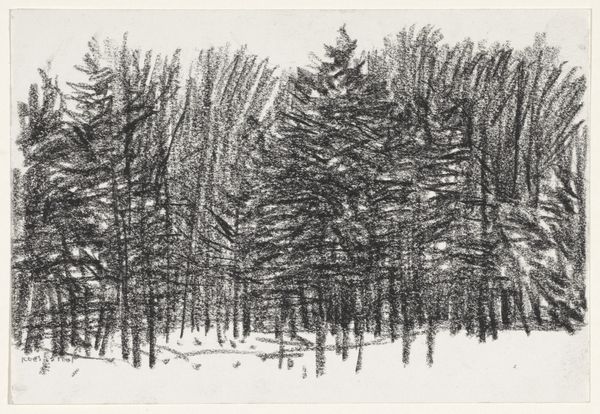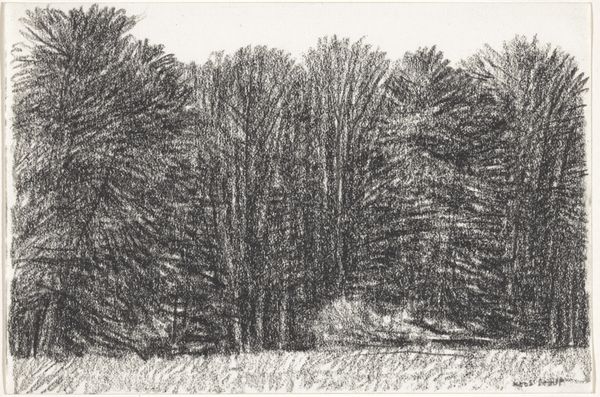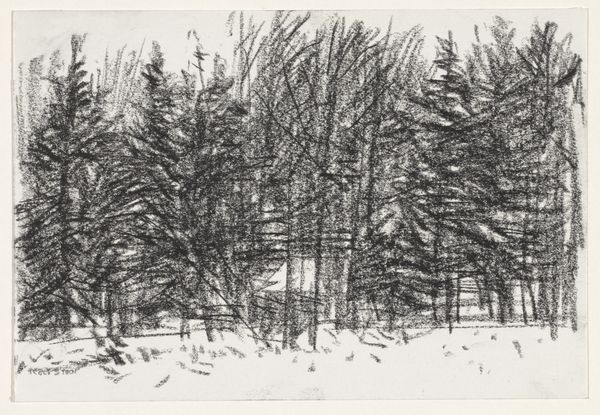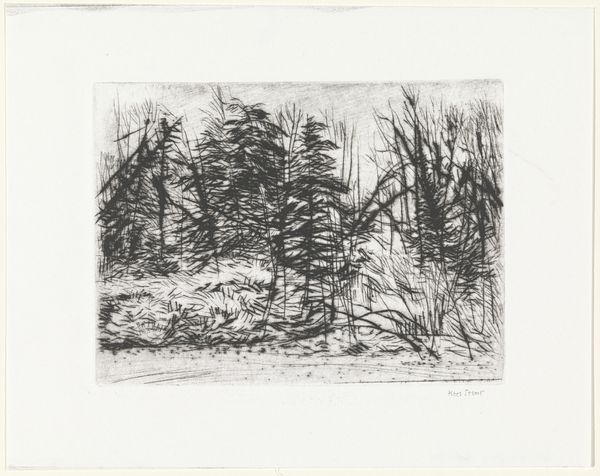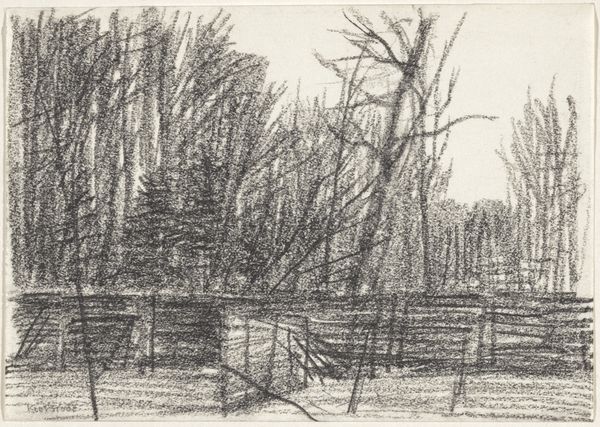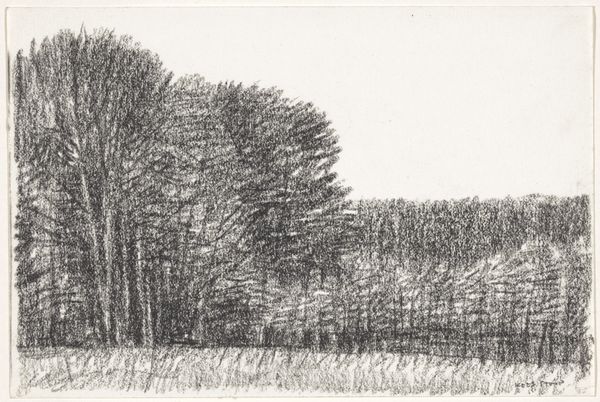
drawing, graphite
#
vegetal
#
natural stroke
#
drawing
#
natural shape and form
#
organic
#
natural substance
#
organic shape
#
landscape
#
nature colouring
#
nature
#
nature heavy
#
graphite
#
natural and intrinsic
#
natural form
#
realism
Dimensions: height 160 mm, width 114 mm
Copyright: Rijks Museum: Open Domain
Editor: This drawing, "Bomen zonder blad," or "Trees Without Leaves," by Kees Stoop, dates between 1939 and 2009. It’s a graphite drawing, and it gives off a feeling of starkness, of winter. What do you see in this piece? Curator: It speaks volumes about the human relationship with the natural world, particularly in times of conflict and reflection. Stoop's choice of bare trees is particularly powerful, isn't it? Given that he began this work around 1939, during the build-up to the Second World War, we can consider the historical context of his work. Editor: Right, that makes sense. Curator: The bareness could symbolize loss, resilience, or even the potential for rebirth after devastation. Think about how nature has often been a refuge and source of strength in the face of societal upheaval. Editor: I hadn't considered the symbolism. I was just focusing on the literal trees. Curator: Stoop began the work in 1939, but worked on it until 2009. Does this delay make us think about a literal event? Or a feeling or state of being that has stayed with the artist? Editor: Good point. It also changes the interpretation entirely. Instead of just war it becomes a rumination on nature as resistance. I wonder about that connection, or perhaps opposition, between nature and the structures of power. Curator: Exactly. How can art challenge existing social structures and contribute to activism and critical thinking? This drawing provides a powerful metaphor for the need to protect our environment. And for those most marginalized in society. The natural world is an area which is relevant to both, isn't it? Editor: Absolutely. Thank you for opening up my eyes to these elements. Curator: Of course. Art offers such scope for considering social justice through aesthetic practice.
Comments
No comments
Be the first to comment and join the conversation on the ultimate creative platform.
